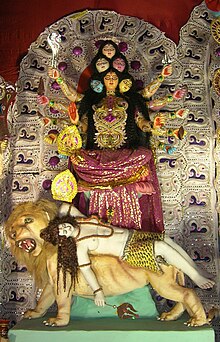Ananku
Femininity that goes unaccepted remains unforgiving
Vengeance of Kamakhya in
the month of Ashaad
Brahmaputra devoid of ichor
Corroding muliebrity till it shrivels into a vestigial flicker
Decades later, when lovers celebrate your womanhood
you fail to find beauty in yourself
no matter how long you gaze at the mirror
reflecting your glistening nakedness
after the vigor of copulation
Half hearted attempts to love what you could not accept
do nothing to assuage the annihilation
you fostered in the pit of your womb
sown by the discontent of your mother at your birth
reiterated into a receptacle of guilt
that outweighs rings of smoke you blow
by rolling joints of any self esteem accrued
despite waging endless war with hirsutism
We don’t always get to choose our battles
Certainly not those that start with
a blade wedged against our necks
But end them we must, with Shakta striding atop
Femininity that goes unaccepted remains unforgiving
Ananku - Female sexual power vested in menarche and
mensuration, mostly considered dangerous and something to be controlled.
Kamakhya - The Bleeding Goddess. The mythical womb and vagina of Shakti are supposedly
installed in the 'Garvagriha' or sanctum of the temple. In the month of Ashaad
(June), the goddess bleeds or menstruates. At this time, the Brahmaputra
river near Kamakhya turns red. The temple then remains closed for 3 days and
holy water is distributed among the devotees of Kamakhya devi. There is no scientific
proof that the blood actually turns the river red. Some people say that the
priests pour vermilion into the waters. But symbolically, menstruation is the
symbol of a woman's creativity and power to give birth. So, the deity and temple of Kamakhya
celebrates this 'shakti' or power within every woman.
Shakta - Female part of divinity

The god-king Daksha, who emerged from Brahma's right thumb , was so displeased that his youngest daughter Sati ("truth") married the ascetic god Shiva despite his wishes that he did not invite either of them to a grand Vedic sacrifice he held for all the deities. In a rage, Sati threw herself into the fire in order to make the sacrifice impure and was later reborn as Shiva's wife Parvati, the goddess of fertility, love, and devotion. Shiva, stricken with grief and rage, decapitated Daksha, put Sati's body over his shoulder and began his tandava (dance of cosmic destruction) throughout the heavens, vowing not to stop until her body was completely rotted away. The other gods, afraid of their own annihilation, implored Vishnu to pacify Shiva. Vishnu's discus Sudarshana sliced up her corpse into 51 pieces, scattered all over India, and Shiva sat down to perform Mahatapasya (great penance). The places the pieces of her body landed are called shakti peethas and are dedicated to various powerful goddesses. Kamarupa ("form of desire") is where her yoni ("vulva," "womb," or "source") landed and where the primary Kamakhya temple near Guwahati, Assam, was constructed ca. 1645. Kamakhya ("renowned goddess of desire") probably predated the Sanskritization of Assam and was likely related to the matrilineal Khasi tribe originally from Assam. In the Tantric text the "Kalika Purana" she was referred to as Mahamaya, the "great goddess of illusion"who took on many forms depending on her mood. Devotees also call her "Kameshwari" (beloved goddess of desire) and consider her a form of Maha Tripura Sundari ("Great Beautiful [Goddess] of the Three Cities") and is also associated with the other nine Dasa Mahavidyas "Great Wisdoms"), who each have temples dedicated to them at the Kamakhya temple complex. She is further identified with Kali ("who is in all things the form of wisdom") in the "Kalika Purana," "Yoginitantra," and "Kamakhya Tantra." Kamakhya is generally pictured as a young goddess with 12 arms holding a lotus, a trident, a sword, a bell, a discus, a bow, arrows, a club or scepter, a goad, a shield, and, in two hands, agolden bowl or a skull. Her 6 heads are of varying colors, representing a powerful goddess who is omnipotent, omniscient, and omnipresent. She is ornately dressed, typically wearing a red sari, opulent jewelry, and red flowers. She is seated upon a lotus, which emerges from the navel of Shiva, who in turn lies atop a lion. Brahma and Vishnu sit upon a lotus on each side of her.
ReplyDeleteThe Brahmaputra is a river that begins in the Angsi glacier in Tibet, flows through Arunachal Pradesh in northeastern India, through Assam, and into Bangladesh, where it empties into the Bay of Bengal. It is navigable for most of its 1,800 mi (2,900 km).
"Muliebrity" means womanhood or womanly qualities. Ichor was the the ethereal fluid that served as the blood of he Greek gods that conferred immortality.
This is a brilliant piece Nalini !
ReplyDelete